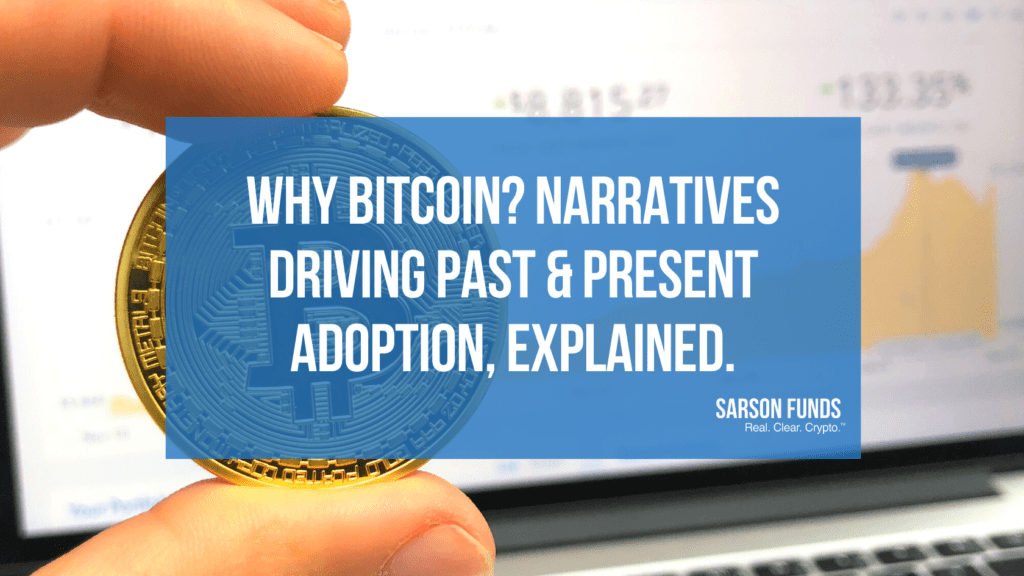
Looking back on last decade’s best-performing asset.
More than a decade after Bitcoin’s inception, the world’s first cryptocurrency remains poorly understood. No matter your success investing in other asset classes, it can be overwhelming to continually hear news about Bitcoin when conversations between its proponents and skeptics remain veiled in technobabble. Even worse, mainstream coverage gravitates toward sensationalism, rather than allowing proper in-depth analysis of the world’s first cryptocurrency. This article offers an antidote to today’s noisy headlines by instead investigating the fundamental ideas driving Bitcoin’s past and present adoption. Our mission is to bring transparency to crypto education to help you decide for yourself on whether Bitcoin is an opportunity worth pursuing.
First, let’s examine how Bitcoin (BTC) serves as money.
Simply put, Bitcoin has taken the characteristics of legacy monies and improved upon them: First, it is durable, since each Bitcoin’s record is saved on the blockchain; second, it is mobile, as Bitcoin can be sent anywhere on earth in hours, 24/7; third, it is uniform (no single Bitcoin is more valuable than another); fourth, it is scarce, as there is a hard cap of 21 million Bitcoin that can ever be created; fifth, Bitcoin is divisible up to 8 decimal places, making it scalable; lastly, it is identifiable, as the Bitcoin network automatically verifies each transaction’s legitimacy. While it is clear that each of these properties is essential to Bitcoin’s usefulness as a currency, some may be bigger strengths than others. Accordingly, narratives surrounding Bitcoin’s fit within the global economy have changed over time.
Now, let’s go back to when it all began.
On January 3rd, 2009, Bitcoin’s pseudonymous creator Satoshi Nakamoto mined the “genesis block”, or the first public transaction record on the Bitcoin network blockchain. As Bitcoin’s network rose from the ashes of the 2007-2008 financial crisis, Satoshi etched a timeless commentary in this first block’s code; “The Times 03/Jan/2009 Chancellor on brink of second bailout for banks.” In congruence with today’s zeitgeist for the decentralization of finance, we interpret Satoshi’s message as a rebuke to central bank monetary manipulation, since Bitcoin’s vision for “A Peer-to-Peer Electronic Cash System” could make such actions obsolete over time. As mentioned, however, Bitcoin’s role in the emergent decentralized financial system may not manifest as originally imagined. In 2021, is Bitcoin truly peer-to-peer electronic cash, as asserted in the Bitcoin Whitepaper? If not, then what forces continue to drive Bitcoin’s price upwards, in addition to burgeoning markets for thousands of other cryptocurrencies?
Think gold, not cash.
From January 2020 to January 2021, the US Federal Reserve increased the dollar’s monetary base from $3.44T to $5.25T (52.5%); in other words, about a third of all circulating US dollars were printed after 2019. In contrast, Bitcoin’s supply increased from 18.19B to 18.61B (2.3%) in the same time frame. By virtue of its supply’s predictable, decentralized, and deflationary production, Bitcoin became a popular safe-haven asset for investors hedging against fiat inflation. Accordingly, Bitcoin outperformed virtually every other asset class in 2020—including the millennia-old incumbent store of value, gold. While it’s true that gold has real-world industrial and cosmetic applications, these account only for a fraction of its market cap. As institutional and retail investors continue to realize Bitcoin’s superior qualities as a store of value, we believe Bitcoin will garner more acceptance as “Gold 2.0.”
But what about peer-to-peer electronic cash?
In 2017, it became clear that Bitcoin’s usefulness as peer-to-peer electronic cash was impractical in its current form. Simply put, Bitcoin was bottle-necked by limitations in its code that capped the network at roughly 7 transactions per second. However, debates about whether to or how to address these concerns were controversial among Bitcoin developers, ultimately leading to the creation of “forks.” These forks, such as Bitcoin Cash (BCH) and Bitcoin Satoshi Vision (BSV) are essentially new blockchains independent from Bitcoin’s original network. However, these projects struggle with concerns about network decentralization and security.
While transactability is important for utility as peer-to-peer electronic cash, network security is paramount—without it, Bitcoin would have no underlying value. Is the vision for peer-to-peer electronic cash dead, then? Will Bitcoin always be too slow and expensive to transact for coffee? We think not, long-term. At Sarson Funds, we continue to monitor the market for technologies promising scalability for Bitcoin payments without compromising the security of its core network. With institutional players like Visa, Paypal, and Square stepping into the space, payment solutions seem like only a matter of time. In the meantime, however, Bitcoin investors may have to be content with the world’s first cryptocurrency serving only as the ultimate decentralized digital store of value. That’s a pretty good start if you ask me.
By Nathan Frankovitz
Disclosures: Not investment advice. It should be assumed that Sarson Funds or its affiliated managers hold positions in all projects that are discussed. It is not possible to invest in any project directly through Sarson Funds, Inc. or its affiliated managers. Any investment product offered by managers affiliated with Sarson Funds should be assumed to be only available to Accredited Investors and subject to the individual terms and conditions of that offering including but not limited to those eligibility requirements associated with U.S. Securities Regulation D, section 506c. Talk with your financial advisor before making any investment decisions or have them contact Sarson Funds directly at [email protected]








